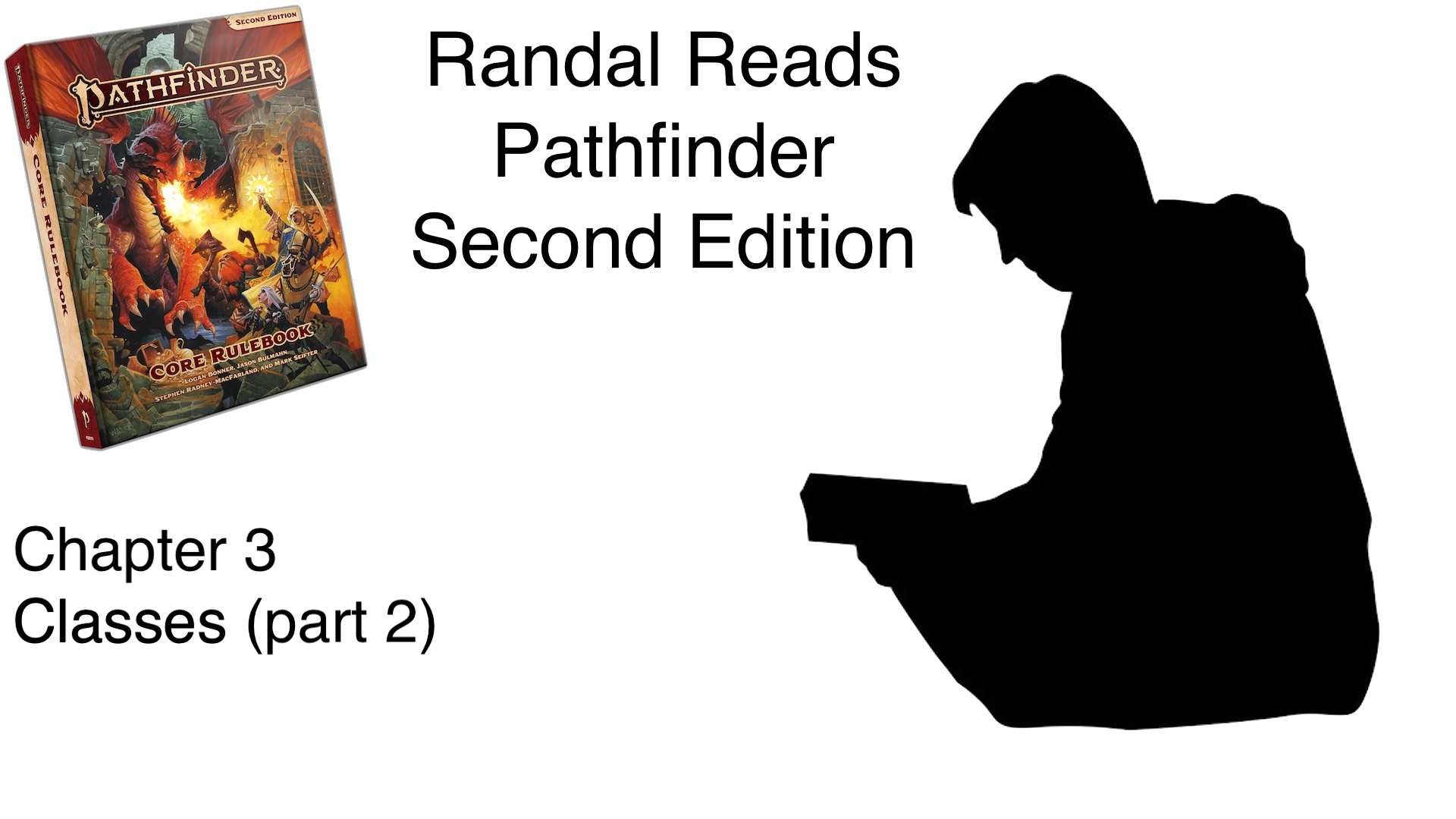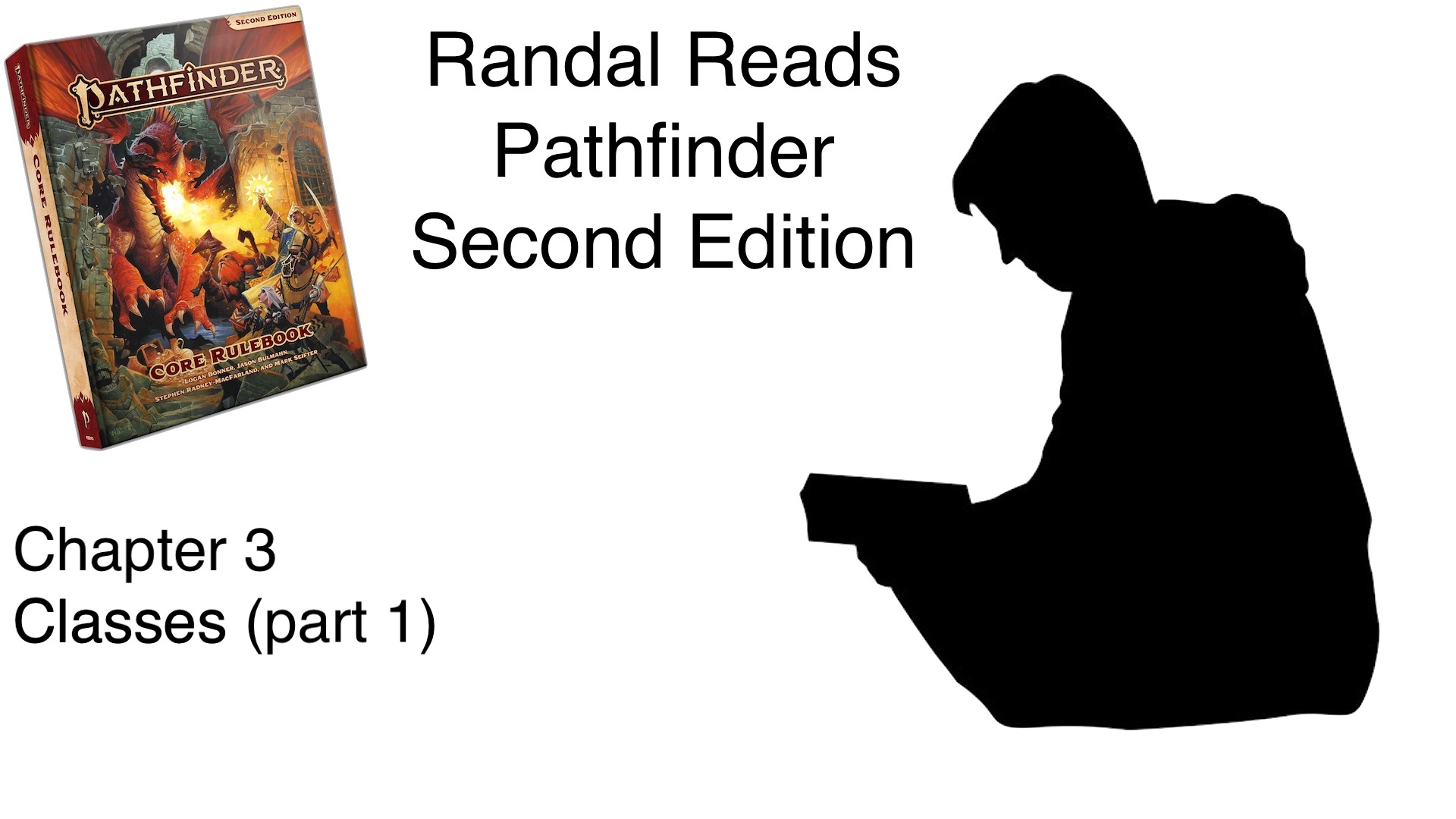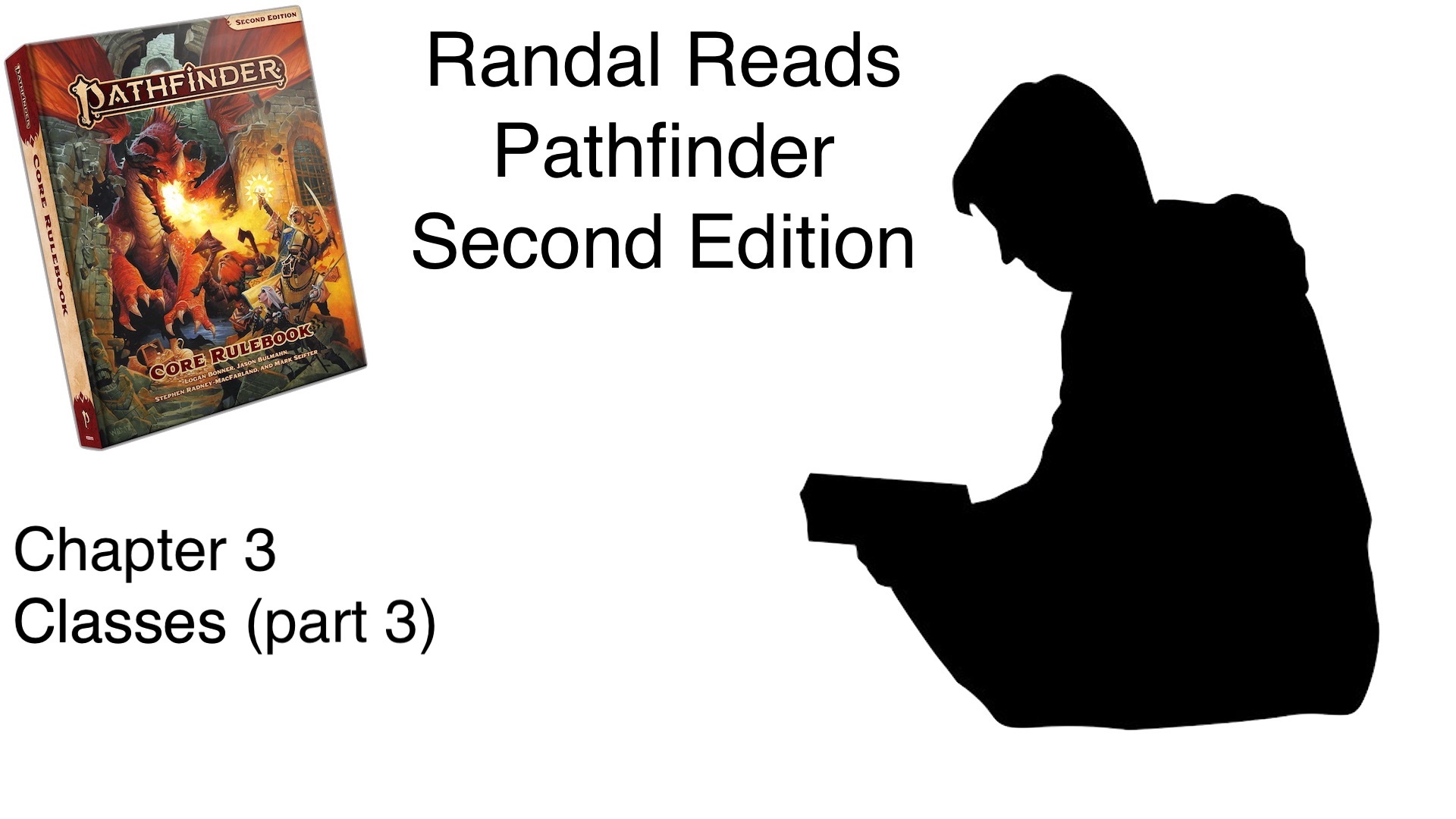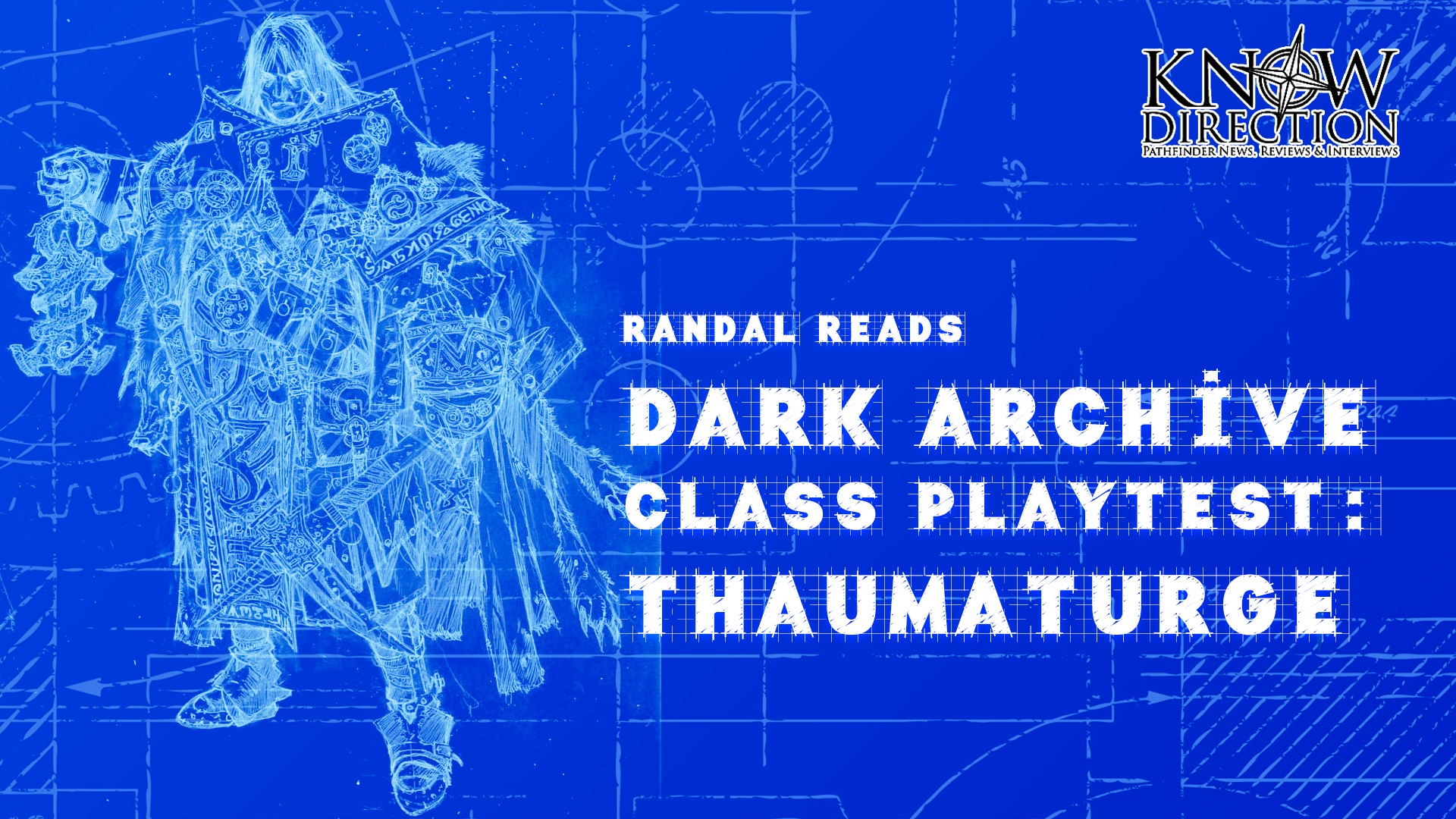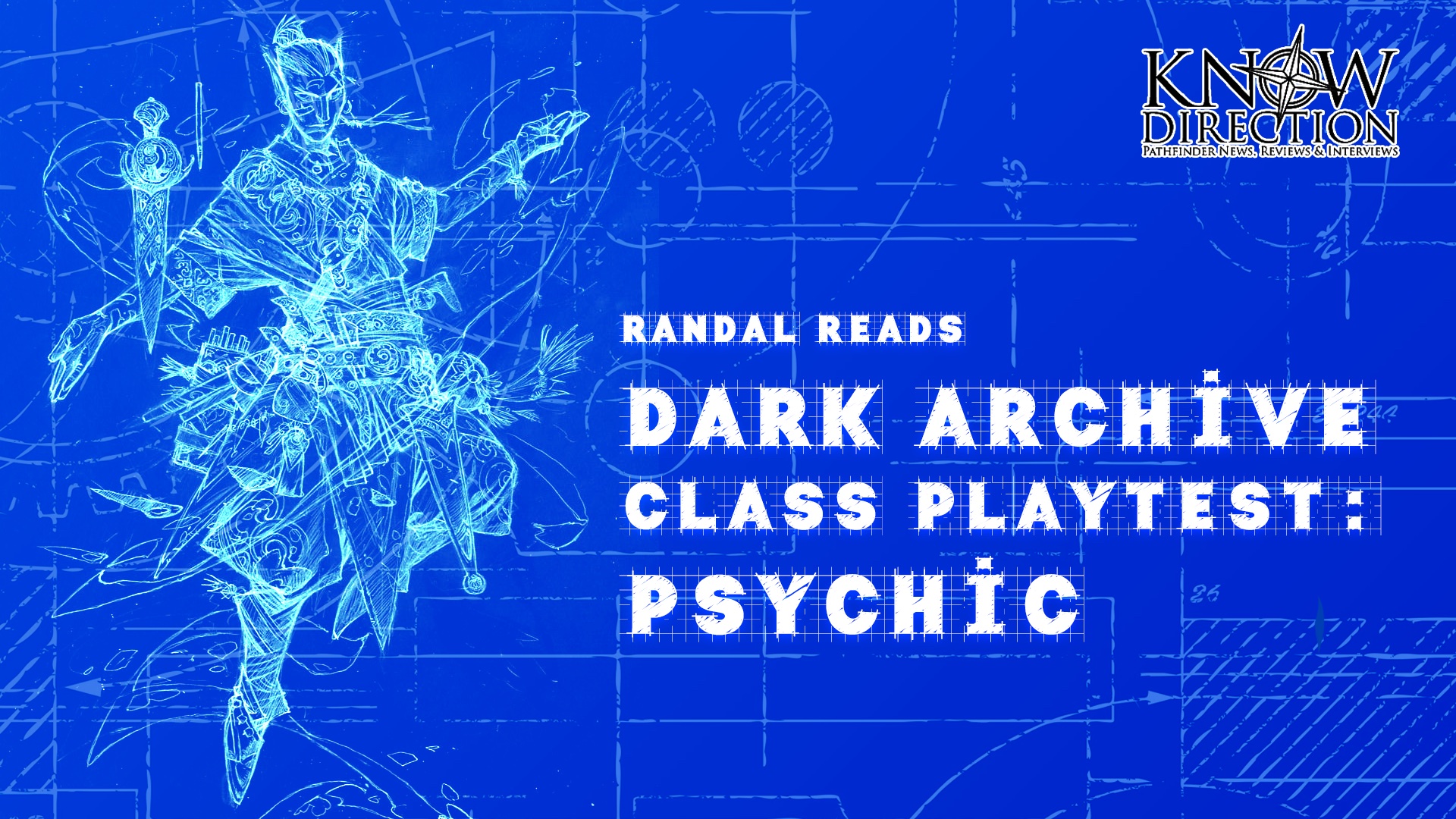Hello, and welcome to a special review of Pathfinder Second Edition. With most of the Know Direction team at Gen Con 2019, gluttonously consuming second edition in all its glory, most of our blogs are on hiatus. I, Randal, writer of Groundbreaking and Terraforming, am here to fill that void with a chapter by chapter review of the new core rulebook. This review is intended to simply be my take on the material as I read it, as first thoughts and impressions, and not a hard comparison of changes from first edition.
Chapter 3 – Classes (part 2)
Barbarian
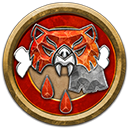 The core selection of instincts (Animal, Dragon, Fury, Giant, and Spirit) provide a wide assortment of options that I think allows for a lot of customization without the need to wait for more with another book. Reading through the abilities and feats gave me a bunch of ideas for builds inspired by many old tropes and even some anime favorites. I imagine a Fury Barbarian using Renewed Vigor to be something like Goku powering up mid fight. I am still hopeful for the surface potential of multi-classing with barbarian to get some of our hybrid classes, like Bloodrager or Skald. Some of the feats give me hope for seeing them used in other classes (fighter or monk) so that we can do some fun builds; such as Sudden Leap for a lancer/dragoon. More time to let the options sink in, as well as practical experience with higher levels and multi-classing in general will ultimately be the judge. I think a dragon barbarian is likely to be my first barbarian build, and I will almost certainly build a wolf barbarian with a wolf companion … perhaps a goblin.
The core selection of instincts (Animal, Dragon, Fury, Giant, and Spirit) provide a wide assortment of options that I think allows for a lot of customization without the need to wait for more with another book. Reading through the abilities and feats gave me a bunch of ideas for builds inspired by many old tropes and even some anime favorites. I imagine a Fury Barbarian using Renewed Vigor to be something like Goku powering up mid fight. I am still hopeful for the surface potential of multi-classing with barbarian to get some of our hybrid classes, like Bloodrager or Skald. Some of the feats give me hope for seeing them used in other classes (fighter or monk) so that we can do some fun builds; such as Sudden Leap for a lancer/dragoon. More time to let the options sink in, as well as practical experience with higher levels and multi-classing in general will ultimately be the judge. I think a dragon barbarian is likely to be my first barbarian build, and I will almost certainly build a wolf barbarian with a wolf companion … perhaps a goblin.
Bard
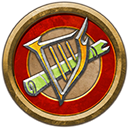 The muse (choose from Enigma, Maestro, or Polymath) is a great way to distinguish bards from each other, and even being able to have multiple muses later feeds into the jack-of-all-trades bit. Replacing the verbal somatic components/actions of spells with musical instruments or singing is a great way to keep/extend the legacy bards of 1e with the new action economy. I do like the change from arcane to occult, and I think that the bard compositions are going to be the primary contender for getting the most use out of Focus Points, or perhaps for showing how versatile Focus Points allow you to be. I am partial to the polymath, but that is likely because I liked the wizardly aspects of the 1e bard (namely the spellbook). It will likely be the first bard I play.
The muse (choose from Enigma, Maestro, or Polymath) is a great way to distinguish bards from each other, and even being able to have multiple muses later feeds into the jack-of-all-trades bit. Replacing the verbal somatic components/actions of spells with musical instruments or singing is a great way to keep/extend the legacy bards of 1e with the new action economy. I do like the change from arcane to occult, and I think that the bard compositions are going to be the primary contender for getting the most use out of Focus Points, or perhaps for showing how versatile Focus Points allow you to be. I am partial to the polymath, but that is likely because I liked the wizardly aspects of the 1e bard (namely the spellbook). It will likely be the first bard I play.
Champion
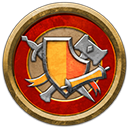 Changing the Paladin to the LG Champion and providing the other two (NG Redeemer and CG Liberator) was a slick move. I love the design space this opens up for the future 6 options. The tenets of faith and anathema are a wonderful way to provide guidance for your character that gives you and the GM both a framework that has boundaries *and* wiggle room. While this class seems to be the figurehead for giving players a choice/path for their class to follow, I like that (mechanically) it is just another example of a class having options and variety. It doesn’t feel unique in the mechanics of it at this point (as alchemist, barbarian, and bard all have paths to choose) so it won’t be jarring for players to adjust to … but the Champion and each type (Paladin, Redeemer, Liberator) are all certainly going to be unique play experiences. Adding oaths and moving a lot of the 1e core pieces (divine grace, aura of courage, smite, mount) to feats is going to make for a lot of variety and customization. I expect to play one of each at some point, but I think my first will be a Redeemer with a Shield Ally.
Changing the Paladin to the LG Champion and providing the other two (NG Redeemer and CG Liberator) was a slick move. I love the design space this opens up for the future 6 options. The tenets of faith and anathema are a wonderful way to provide guidance for your character that gives you and the GM both a framework that has boundaries *and* wiggle room. While this class seems to be the figurehead for giving players a choice/path for their class to follow, I like that (mechanically) it is just another example of a class having options and variety. It doesn’t feel unique in the mechanics of it at this point (as alchemist, barbarian, and bard all have paths to choose) so it won’t be jarring for players to adjust to … but the Champion and each type (Paladin, Redeemer, Liberator) are all certainly going to be unique play experiences. Adding oaths and moving a lot of the 1e core pieces (divine grace, aura of courage, smite, mount) to feats is going to make for a lot of variety and customization. I expect to play one of each at some point, but I think my first will be a Redeemer with a Shield Ally.
Cleric
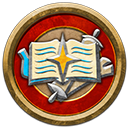 I love that the cleric is still the cleric we are all familiar with. Anathema is again put to good use, Divine Font provides that extra juice from what was once channeling, and domain feats provide the domains we are used to (themselves updated, of course). The Cleric’s choice of doctrines, however give us something we didn’t have in the previous core rules … a proper core warpriest. 1e cleric could do in a pinch, but it was mostly a heal machine. Now, you can be either one (Cloistered Cleric or Warpriest) and set yourself apart. Even with that in mind, I am still not sure what type of cleric I would build, which means my first cleric is likely going to be a long time coming. What with the new resting rules and Medicine checks, I may not have to build a cleric to round out a party ever again.
I love that the cleric is still the cleric we are all familiar with. Anathema is again put to good use, Divine Font provides that extra juice from what was once channeling, and domain feats provide the domains we are used to (themselves updated, of course). The Cleric’s choice of doctrines, however give us something we didn’t have in the previous core rules … a proper core warpriest. 1e cleric could do in a pinch, but it was mostly a heal machine. Now, you can be either one (Cloistered Cleric or Warpriest) and set yourself apart. Even with that in mind, I am still not sure what type of cleric I would build, which means my first cleric is likely going to be a long time coming. What with the new resting rules and Medicine checks, I may not have to build a cleric to round out a party ever again.
Druid
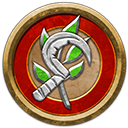 The druidic orders again show flavor and difference within the class, as well as letting anathema shine as a simple and elegant mechanic for keeping PCs in check. (I really have no clue why I like Anathema so much!) The Wild druid is the shape shifting legacy while the Animal druid is the animal companion legacy. Leaf and Storm are both natural fits to the class and most likely my first two builds … or perhaps first build since you can eventually have more than one order. In fact, being able to take abilities from orders you aren’t a part of is a nice way to show that they are all a part of the druid, but that your choice of order does have an impact on how you focus your strength. Yeah, I think a Leshy Leaf/Storm Druid with a Leshy Animal Companion is a high contender for my first build (when we get the leshy ancestry, that is). Note: Description says prepare 5 cantrips daily while the table says 4. We now know that the descriptions trump tables, and so the Druid has 5 cantrips daily!
The druidic orders again show flavor and difference within the class, as well as letting anathema shine as a simple and elegant mechanic for keeping PCs in check. (I really have no clue why I like Anathema so much!) The Wild druid is the shape shifting legacy while the Animal druid is the animal companion legacy. Leaf and Storm are both natural fits to the class and most likely my first two builds … or perhaps first build since you can eventually have more than one order. In fact, being able to take abilities from orders you aren’t a part of is a nice way to show that they are all a part of the druid, but that your choice of order does have an impact on how you focus your strength. Yeah, I think a Leshy Leaf/Storm Druid with a Leshy Animal Companion is a high contender for my first build (when we get the leshy ancestry, that is). Note: Description says prepare 5 cantrips daily while the table says 4. We now know that the descriptions trump tables, and so the Druid has 5 cantrips daily!
Tune in tomorrow for Chapter 3 – Classes (part 3)!

